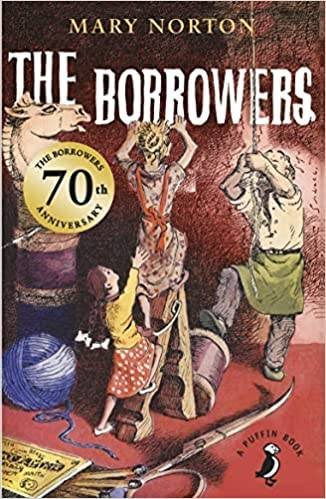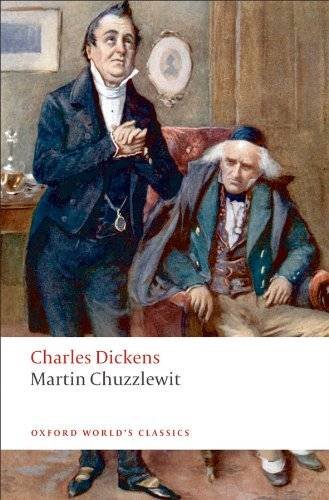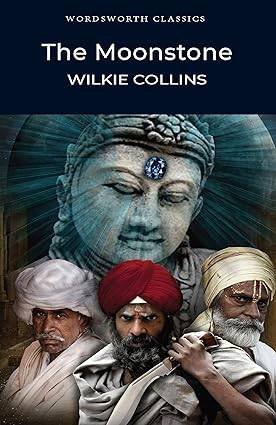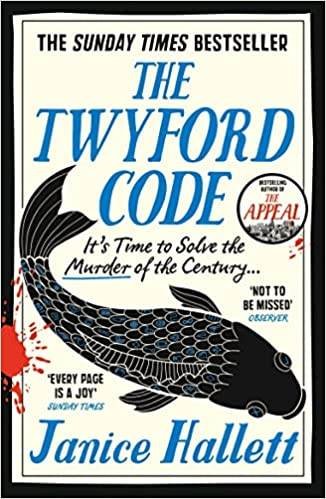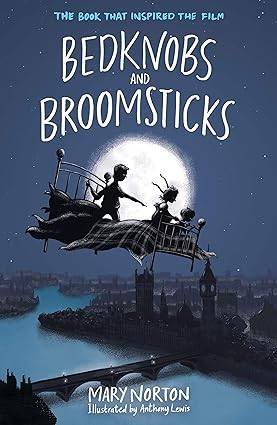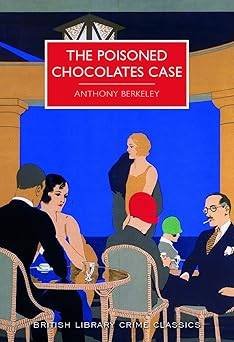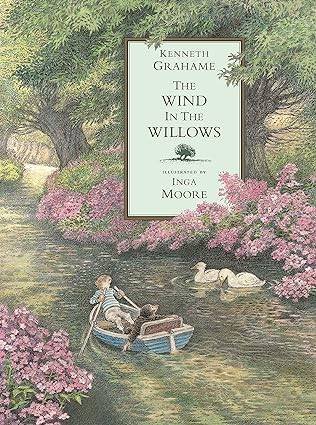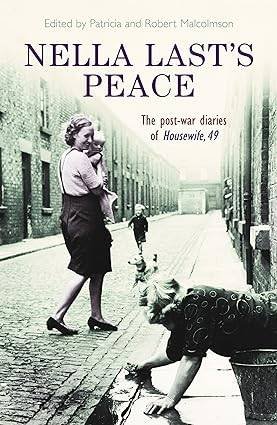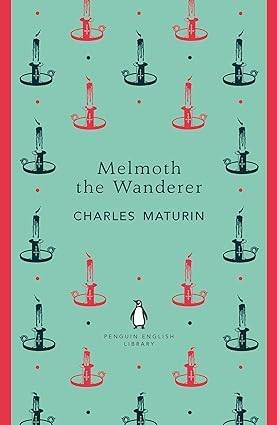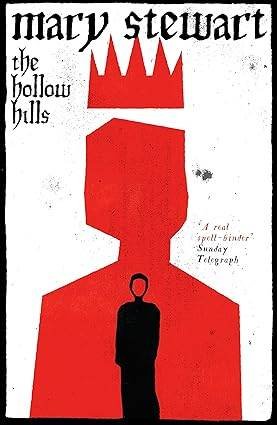Home » Book Reviews » Mary Norton » The Borrowers by Mary Norton
Possible spoilers ahead
I’m so excited to read this book, I love the idea of little people living alongside humans, it all just seems so magical and appealing! And I’m a big fan of children’s books, Enid Blyton being my go-to favourite, so it will be interesting to compare other authors and their creations to her wonderful books.
The story of the Borrowers is told by Mrs May who says her young brother, then aged 10, was ill so was sent to their great-aunt’s house in the country to recover, and that when he arrived at the house he was confined to bed so the Borrowers living at that house were therefore unaware of his arrival. The Borrowers are the Clock family, father Pod, mother Homily, and daughter Arrietty who is aged 14, and they are 13cm high. Borrowers come from generations of ‘little people’ who have become smaller and smaller over the ages in an effort to escape notice and to survive. They borrow from humans and convince themselves they are far more numerous than humans because humans are so impractically large that they are dying out, but in reality Borrowers are very scared of humans and only live in quiet old houses where there aren’t very many humans and no children or pets. They are very particular about their borrowing, and view borrowing from humans as being different from stealing because the purpose of humans is to provide supplies for Borrowers, ‘human beans are for Borrowers, like bread’s for butter’. They live their lives based on routine, knowing which rooms in the main house are commonly used and when, and so therefore avoiding contact with humans. Ooooh, I love all these ‘facts’ about Borrowers, it all makes it seem so appealingly real! I love details like this.
The entrance to the Clocks’ underground home is via a hole under the grandfather clock in the hall, and then through various passageways with doors and gates to their home. Only Pod goes through the passageways to the clock and out into the main house, Homily and Arrietty never leave their home, though Arrietty can look through a grate into part of the garden belonging to the house. Homily is a worrier and never desires to leave their home, which she is extremely proud of, and she is also proud of Arrietty’s ability to read and write. Arrietty feels constrained and trapped by her existence and wishes they could move (or ‘emigrate’) to somewhere new, or that she could go out borrowing, or that she could mix with other Borrowers, as the Clocks are now the only family of Borrowers living at the main house. The humans in the main house are Great Aunt Sophy who is bedridden, the cook Mrs Driver, and the gardener Crampfurl. Pod regularly appears infront of Great Aunt Sophy, even walking on her quilt and talking to her, as she is given a decanter of madeira at 6pm every evening and has drank the whole of it by midnight so she never then believes anything she sees. Ooooh, it all feels so real, I love this world and want to believe it is real! And yet interestingly, while the author has provided all these wonderful details in order to make the world seem real, doubt about their existence is introduced right at the start of the book with Mrs May stating that this was all told to her by her brother when he was young and that he wanted to impress his sisters, that she never saw the Borrowers herself and wasn’t ever sure if her brother actually saw them or if it was all a story fabricated by him, and she says that it ‘all sounds such nonsense and it was so very long ago’. I think this is such clever storytelling, as the author has made the reader desperately wish for it all to be true by littering the story with doubt, so I determinedly want to believe because I am being repeatedly told it probably isn’t true!
The Clocks are now the only Borrowers living at the house, as the others have all gone away. Uncle Hendreary and his family left because he was seen by a human so a cat was then bought by the main household in order to rid the house of pests and it is believed that Uncle Hendreary’s daughter Eggletina was caught and killed by this cat, so the house then became so dangerous for Borrowers with the cat and full of sad memories for the Hendrearys that they and the others all moved away. Tee hee, I love the humour of how Uncle Hendreary was seen, as he was on the drawing room mantelpiece when the housemaid came into the room to dust so he stood still on the mantelpiece and she dusted him along with the other ornaments but he then sneezed! I also love the preciseness of the exact date and details of this incident being recorded and handed down in Borrower history (it was 23rd April 1892, and the housemaid’s full name is also recorded, Rosa Pickhatchet), as it reminds me of battles and ships being recorded by dates and names during the war, and I guess to the Borrowers this incident was as huge an event as something like that.
One night, Pod is seen by the boy as he couldn’t quickly hide because he was halfway down a curtain holding onto a doll’s teacup he had just borrowed. The boy had watched his progress down the curtain for 10 minutes, and had then helped Pod down by taking the teacup so he could climb down the curtain better and had then handed him the teacup again when he was down. Although Homily is scared when Pod tells them this news, she is determined that they won’t emigrate as she loves her home too much. Arrietty surprises them by not being scared and immediately saying she hopes they will emigrate so she can then see the outside world and other Borrowers. Homily reflects on this and decides that the best way to curtail Arrietty’s wishes of emigration and to keep her safe, as well as to give her skills in case anything happened to Pod, would be that she goes borrowing with him one time when it seems safe to do so. Pod is reluctant to do this, but Homily points out that Pod would teach a son borrowing so as they have no son then Arrietty should be taught. Oooh, I am entranced and charmed by this wonderful book just from the first few chapters, and I’m loving every moment of reading it. I feel I need to ration myself and not race through it as I don’t want to (ever!) reach the end of the book, so I am reading a couple of chapters at a time and savouring it and making it last. It is beautifully written and such a perfect blend of magic and practicalities, and I get the sense that the characters were so vivid and alive in the author’s head and that she wanted to believe they were real as much as I do! I like the courage of Arrietty, and of Homily too in convincing Pod that Arrietty should be treated as equally as a boy would, I guess the author could have had the Clock child be a boy but I’m wondering if she chose to have her as a girl in order to demonstrate that girls should be treated equally.
Arrietty accompanies Pod on her first trip in her life from out under the clock. Her first reaction at finally seeing the clock which her family is named after is sudden swelling pride and almost tearfulness. She then watches her father run out from under the clock and across the hall floor towards the front door and is struck by how small and vulnerable he is. She looks at the house stairs mounting upwards, thinking ‘another world above…world on world, and shivered slightly’. Pod then signals for her to join him and she runs out, dazzled by both the wonderful feeling of sunshine on her skin and of being able to run, mixed with an overwhelming awareness of the huge space above and around her. Oooh, this is possibly one of my favourite sections of the book as it is all described so well! Arrietty’s excitement really comes through and it’s so beautifully described that I could almost feel what Arrietty felt, especially her incredible joy at finally being outside and free when she goes out of the front door, and then sees her mother through the grating by their home. I also loved how the clock was described as symbolising safety with its monotonous ticking and chiming, and symbolising calm with its age and patience and stability, that’s such a beautiful image and I can almost hear that monotonously comforting tick tock tick tock. But her excitement is also so cleverly intertwined with her awe and slight fear at the huge space and how tiny they are within it, and it quite choked me up when she was shocked to suddenly see her father looking so small and vulnerable. Ooooh, this writing is really sublime! I also again loved the details included, such as Arrietty’s ‘toes danced on the green moss’ outside their grating which makes her realise that this green moss grows there by the grating because they throw their water out there, these beautifully well-thought out details just makes it all seem so real. And I was fascinated by the borrowing rules explained to Arrietty by Pod, such as to only climb down or up something that is fixed as if once you’ve climbed it and the family move it then you are stuck, to always take an extra borrowing bag with you in case you see something extra to borrow, to always leave the passage gates open on your way out so you can get back through swiftly if needed, and to always put your borrowings immediately into your borrowing bag so you don’t leave them behind if you have to run quickly. I feel these are important rules to remember in life!
Arrietty ventures into the lawn and the grass blades are at waist-height, she sees a beetle and an ant and two birds and a woodlouse, and looks at ‘the cracks and furrows of the primrose leaves (with) crystal beads of dew (that) rolled like marbles’, and when she picks a primrose ‘the pink stem felt tender and living in her hands and was covered with silvery hairs, and when she held the flower, like a parasol, between her eyes and the sky, she saw the sun’s pale light through the veined petals’. I feel I am at risk of repeating myself, but I am just soooo blown away by this beautiful writing, these pieces about the wonder of nature are so tenderly depicted, it’s so beautiful to read.
While out in the garden, Arrietty comes face to face with the boy. However, the boy seems almost as scared of Arrietty as she is of him. They gradually speak to each other and then become quite competitive, trying to impress the other with their reading ability and knowledge. Arrietty enjoys telling him proudly of the finer details of the borrowing life and the difficulties and dangers of it and how her family has achieved a good life at the main house and where the Hendrearys live (in the badger sett beyond the spinney in Parkin’s Beck Field), and she states that Borrowers outnumber humans. He then tells her about the billions of human beings there are in the world, the different countries they live in and the different activities they do, and he questions if there are any Borrowers left apart from the Clocks. This scares and upsets Arrietty and she becomes worried that they might indeed be the only Borrowers left and will die out under the floor in the dark. The boy then regrets upsetting Arrietty, and offers to take a letter from her to Uncle Hendreary and she arranges to leave this letter under the doormat by the front door for him to collect. She doesn’t tell her parents about being seen and talking with the boy. She eventually manages to leave her letter under the doormat, and a few days later she hears Crampfurl telling Mrs Driver that he’s seen the boy looking down rabbit holes a couple of fields away, so she knows that the boy has got her letter and has tried to deliver it. Oooh, that was all a bit tense with Arrietty meeting the boy, but I was full of admiration again with the writing and how it changed from the long descriptive sentences about Arrietty’s views of nature to short brief sentences of just a few words to demonstrate Arrietty’s shock at coming face to face with the boy, it’s very effective, ‘Something had glittered. It was an eye. Or it looked like an eye. Clear and bright like the colour of the sky. An eye like her own but enormous. A glaring eye. And the eye blinked’. And I was struck with how authentically written the situation was between the two young children, they were meeting in amazing circumstances to each of them but their instinct was to compete with each other and show off and to triumph in outdoing and scaring each other, just as normal children often do.
One evening when Pod is upstairs talking to Great Aunt Sophy, Arrietty determines to seek out the boy and ask him about what happened with her letter. She reaches the nursery where he sleeps, and he tells her that Uncle Hendreary had written a reply asking the Clocks to send Aunt Lupy back, so Arrietty realises that Aunt Lupy must have attempted to visit the Clocks some time ago and has presumably been injured or caught as she hasn’t arrived. Pod hears Arrietty’s voice talking to the boy as he leaves Great Aunt Sophy, and is very angry to see Arrietty there. She then has to tell her parents about being seen, and they are extremely frightened, saying that Arrietty has put them in grave danger by giving the boy enough clues as to where exactly they live in the main house, and also telling the boy where Uncle Hendreary lives thus putting that family in danger too. Pod says that Borrowers have been seen before but never has a human known where any Borrower lived. He declares that they will have to leave the next day, although they have nowhere to go. Arrietty maintains that humans aren’t that bad, but Pod says ‘they’re bad and they’re good…they’re honest and they’re artful, it’s just as it takes them at the moment…steer clear of them, that’s what I’ve always been told. No matter what they promise you’. That night, they wake to their ceiling being prised open by the boy! Ooooh, even though this was an alarming section to read with the shock of the boy appearing above them, I loved the humour of it all, with Homily still having her standards even though she was scared as she was determined not to get out of bed and be seen in her old patched nightgown, and she was distressed at the realisation that she hadn’t wash the supper dishes that night so the kitchen looked untidy, tee hee!
The boy has brought them items from the dollhouse, such as a dresser complete with crockery and a Victorian velvet chair, and he offers to bring them more, such as carpets and rugs and beds with mattresses and a table and cooking pots and a sofa. The boy later takes items from the glass cabinet in the drawing room, such as jewelled snuff boxes and filigree vanity cases and Dresden figurines, which all delight Homily but which are eventually noticed to be missing by Mrs Driver who straightaway suspects that someone is stealing the items in order to try and frame her. She suspects Great Aunt Sophy or the boy, and is determined to catch them so she sets an alarm for midnight and then prowls around the house. She sees a light under the kitchen floor and then spots an item from the drawing room cabinet beside a loose floorboard. She pulls up the floorboard and sees the Clocks! She is very scared and screams for Crampfurl. She is puzzled at what she has seen and describes them to him as mice dressed up, though she inwardly admits they were people and not mice. She and Crampfurl pick items out of the Clocks’ home, destroying the home in the process, and they discover many things they have long missed. Mrs Driver states she will call the police and the fire brigade and the sanitary inspector and the rat catcher, and she will get a cat. The boy has heard some of this and sneaks down to the kitchen later in the night when Mrs Driver and Crampfurl have left in order to try and help the Clocks. He offers to hide them somewhere in the main house that night and then take them to Uncle Hendreary’s badger sett the following day, but as they are discussing these plans Mrs Driver appears! She accuses the boy of being a thief and of being in league with the creatures, and in his eagerness to defend them he tries to explain that they and he are Borrowers. Mrs Driver tells him that the Borrowers will be dealt with by the rat catcher. Omg, my heart was in my mouth throughout all of that, how vicious and cruel Mrs Driver and Crampfurl are, it makes me pity not only the Borrowers but any rat or mouse eking out their lives in someone’s house! And awww, the lovely boy being so keen to try and help them (and so desperate to be one of them, calling himself a Borrower too, bless him) and I was so heartened by his idea of taking them to Uncle Hendreary’s badger sett, I was really thinking this would happen and they would escape…and then Mrs Driver appeared again, eeek! But before all this drama, I also loved Homily’s delight in the items the boy had brought for their home, though Pod was less keen about the ethics of a boy helping Borrowers and also where all these items would be stored!
The boy is informed that a place on a boat to India has become available (the boy’s family live in India but the children had been sent to live in England) so he is to travel back there to be with his family and he is to leave in three days’ time. Mrs Driver locks him in his room until then so he can’t help the Borrowers. The rat catcher arrives and pulls out the clock and then filters smoke down under the floorboards, expecting the creatures to then run out to where he has his dogs waiting to catch them. The boy is brought down into the kitchen to watch this while he waits for his taxi to the station, but he manages to sneak away to the grate with one of the rat catcher’s tools and knocks the grate out in the hope the Borrowers can escape through that way, although he doesn’t actually see them leave. Omg again, this was so awful to read, evil evil Mrs Driver for bringing in the ratcatcher (and my heart went cold thinking of his dogs waiting by their exit, shiver!) and even more evil for bringing the boy to potentially watch the Borrowers be caught and killed, how cruel she is! Though this thankfully gave the boy the opportunity to hopefully provide them with an escape route, although, arrrrghh, I wish he had seen them escape so he (and I!) knew that they had got away safely, I feel it’s a bit mean of the author not to give us that assurance after we’ve grown so attached to these creatures!
Mrs May says her brother never saw the Borrowers again and never knew for sure if they had managed to escape. She says she herself went to the house later and she didn’t see any Borrowers there, but that she also went to the badger sett and found an oak-apple which she thought looked like their teapot, though the spout was missing, and she smelt hotpot cooking. She therefore left a pillowcase of supplies by the badger sett, and then found it gone the next morning so she hoped this meant that the Clocks had reached the badger sett safely and had taken her supplies. Mrs May also says she found Arrietty’s diary, and this story was detailed in the diary. But she says that the writing in the diary was very similar to her brother’s writing, so she has never been sure herself if the Borrowers did exist or if it was all just made up by him. But she adds that she ‘just knows’ that the Borrowers escaped, and says the end could be ‘the beginning’.
I’m so sad to reach the end, I loved every page of this book and the world the author had created, it’s such a wonderful book! And although I am trying to admire the author’s technique of implying doubt regarding if the Borrowers really exist, I did find myself incredibly frustrated at the lack of confirmation at the end! I also felt quite sad for Arrietty that it was her exuberance and enthusiasm for life and adventure which caused such danger to the family and made them have to leave, I almost wish it had been due to something else unconnected with her as it is a shame to think of her spirits being crushed after her very first adventure and her feeling guilty for everything that happened. And I realise we haven’t found out either what happened to Aunt Lupy in her attempt to reach the Clocks, or what actually happened to Eggletina and whether she was killed by the cat or if she escaped somehow and is living elsewhere, though I see there are further books (hurrah!) so hopefully those will explain these things. I was also a bit puzzled by how Mrs May found Arrietty’s diary, was it at the house or was it by the badger’s sett, and where is it now, as I can’t imagine Mrs May destroyed it? And I was puzzled by Mrs May’s manner at the end of the book, with her speaking ‘hastily’ and ‘hurriedly’ and that she ‘hesitated’ and was ‘drawing back’, and that Kate (who Mrs May told the Borrower story to) ‘stared at her suspiciously’. Why did Mrs May seem evasive, was it just because she was ashamed of reading someone’s diary (Arrietty’s diary), or was she wishing that she hadn’t told the story and encouraged Kate to believe in the Borrowers, or was it all just a made-up tale and she hadn’t imagine Kate would believe it so thoroughly and now wanted to let her down gently? But then she offered possible solutions to Kate’s surmises on how the Borrowers could have escaped, suggesting they found their way to the badger sett by following the gas pipe and that they surely would have had time to grab essentials before leaving, and she spoke of the wonderful life she thought they would have at the badger’s sett and the food they likely ate there and that they probably got to know the habits of the animals so as to be able to live there safely, and suggesting that they probably used the badger’s sett for storage and actually lived in the gaspipe which they bored holes into so they could use and control the gas for cooking. Hmmm, I feel heartened by this as it gives me the hint of confirmation I’d hoped for that the Borrowers do exist!!
I found myself getting slightly obsessed with the details of the Borrowers’ world, and probably focusing more on these details than the actual plot (!), and it is these details that have stayed with me now I’ve finished the book. I particularly adored the detailed descriptions of the practical items that the Borrowers used to create furniture, and I’m just full of admiration of the thought the author put into all this, it all feels like something to cherish and I can picture these items so clearly in my mind, and even though this is obviously a children’s book I think dealing with practical things like furniture and kitchen utensils brings the book alive for adults too. I couldn’t stop myself from noting down all these items, just wanting to record the magic and wonder that I felt with it all (and, if I’m honest, tempted by the hope that it could all be real, tee hee!). So, the details…they use half a scissor as a kitchen knife, old letters as wallpaper, postage stamps as pictures, matchboxes as chests of drawers, a cut-off hazelnut shell as a cup, the bottom of a pill box and the pedestal of a chess piece as a table, a mustard pot as a fuel storage unit, safety-pins as coat hangers, a cog-wheel as a fireplace and a funnel from an oil lamp as piping to direct the fumes to the kitchen flue in the house above, crumbled candle grease as fuel for the fire, handkerchiefs as bedcovers and sheets, an oak-apple as a teapot with a quill as a spout (is this what Mrs May found?!), a thimble as a soup pot, pen-nibs as flour scoops, a small electric-bell clapper as a hammer, cotton-reels as seats, blotting paper as carpet, upturned drawing pins as candle holders, a pate tin as a bath, beads as buttons, doormat fibres as brushes, an aspirin bottle lid as a sink, an eyebrow comb and a toothbrush as hairbrushes, two cigar boxes for a bedroom, teacups from the dolls’ tea service in the schoolroom, and they get hot and cold water by tapping the pipes from the kitchen boiler with a scent-bottle cork. They also have miniature volumes of ‘Tom Thumb’ books (apparently Victorians used to love printing these) which Arrietty learnt to read from, and she learnt to write by following the words on the letters stuck on the wall and she diligently wrote in her diary every day (again, is this what Mrs May found?!). Other wonderful details are that they eat sliced boiled chestnuts as bread, and cover breadcrumbs with sugar as a dessert, and eat dried currants warmed infront of the fire. I am just blown away by the imagination of it all and the obsession that the author clearly had about these characters and their world, I always heartily love books with obsessive details like this!
I also love the families being named for where they live in the main house. Obviously the Clock family lived under the grandfather clock in the hall, but there were also the Harpsichord family, and the Overmantels, and the Rain-Pipes (from the stables), and the Sinks, and the Broom-Cupboards, and the Rain-Barrels, and the Linen-Presses, and the Boot-Racks, and the Stove-Pipes, and the Bell-Pulls, and also the Honourable John Studdingtons (who lived behind a picture of this man, and I think this may be my all-time favourite name!). Uncle Hendreary and Aunt Lupy were also Clocks (though Aunt Lupy was originally a Rain-Pipe who then married a Harpsichord and then married Hendreary Clock). Homily was originally a Bell-Pull. I just love love love the imagination of it all and the detail, I feel the author really lived this world in her mind, and I am so grateful that she shared it all!
I also liked the fact that not everyone in the Borrower world is charming and friendly, and some people have unfavourable characteristics, just like in real life. Homily stated that the Overmantels in the morning room were ‘stuck-up’ and she disapproved of the men in that family for smoking and drinking (as they could do this by borrowing leftovers of cigarettes and drink from the morning room where their overmantel was located), and she disapproved of the women in that family for admiring themselves in the looking glass in the room and for being lazy and only eating breakfast food (as this was the only food served in the morning room). Homily also described the Harpsichords in the drawing room as ‘stuck-up’ and said that they were pasty because they only ate the afternoon tea leftovers which were served in the drawing room. Again, it all adds to the ‘real world’ feel and the believability of it all, with there being snobbery and disapproval of each other. And I also love the details of the grand main house too, with the morning room and the drawing room.
I also admire the author’s decision to allow the Borrowers’ lives to be dangerous and that there were risks and fear of death (and even the tragedy of a child having possibly died, Eggletina), so it wasn’t just a perfectly magical charming idyllic world, there were dangers and care needed to be taken, again just like in the real world. It’s very cleverly written, I think, because of this, and therefore feels different to some other children’s books as the Borrower world feels more realistic and believable because of these difficulties and dangers and hazards. And another way in which the charming idyllic world is challenged is by Arrietty being frustrated with her life under the clock (even though it sounded idyllic to me!), listing the disadvantages of living there and viewing herself as being cooped up and restricted and longing to explore the bigger world upstairs and outside in the garden. And I can see young children identifying with her wish to explore and be independent, and also sympathising with her frustration at the restrictions placed on her by her parents (though they were only trying to keep her safe). And the author’s knowledge of how children often act when together feels very accurate, with the competitiveness between the boy and Arrietty and them both vying to impress and outdo the other with their achievements and to show their life as the better one, even upsetting and scaring each other a little, just as children do in real life. I felt that there were so many times when the author managed to achieve just the perfectly accurate tone.
I also admired how the style of writing changed depending on the situation, as the descriptions of nature were enticingly and descriptively detailed in quite lengthy sentences, and yet when there was suspense and drama (such as when Arrietty saw the boy) then the sentences were short and quick, and the author also managed to squeeze humour within the suspenseful situations, such as Homily worrying about her appearance and the unwashed dishes even though she was terrified when the boy prised up the floorboard to look down on them.
I wondered when this story was set (ie, the time of the story when Mrs May’s brother was at the house). Uncle Hendreary was seen in 1892 and the Borrower families began leaving after this incident but Pod said that them leaving was also due to there being less visitors in the main house (so therefore less pickings for the Borrowers to borrow) and he said that there had been no company at the main house for 10 or 12 years, so does that make the story set in about 1904? Also I don’t think Arrietty had ever met Eggletina so if Eggletina was potentially killed in 1893 (after the cat was introduced after Uncle Hendreary was seen in 1892) and Arrietty was aged 14 in this story then it must have been at least 1907 when this story was set? The postage stamps on their walls showed Queen Victoria and she reigned from 1837 to 1901 (although that’s a big window of time for the Clocks to have obtained the stamps, so perhaps that’s not so useful!). Mrs May said her brother was killed in the War and I’m presuming this was the First World War so 1914-1918 (as the book was published in 1952 and Mrs May was an elderly lady then and she said it all happened ‘so very long ago’ so surely the Second World War would be too recent an event) so if he was at least 18 in the war then that makes him born in about 1896 (admittedly this is a very big stretch as he could have been any age really when he went to war, but somehow from Mrs May’s sadness and regret about the tragedy of his death I kind of got the impression that he was a young man) and he was aged 10 when at the house then that makes it 1906? But even I am now thinking I’m possibly getting too involved in the details of this story!
I can’t wait to go back into the Borrowers’ world with the rest of the books in the series, and I am very intrigued by what the titles of these books might reveal about the Clocks’ further story, these being The Borrowers Afield (so I’m hoping this field is Parkin’s Beck Field where the Hendreary’s badger sett was, meaning that the Clocks successfully escaped there), The Borrowers Afloat (eeek, this title sounds a bit scary!), The Borrowers Aloft (are they in a loft/attic in a house?), and The Borrowers Avenged (I’m hoping this is them getting back at Mrs Driver!). I am also very keen to read any other books which Mary Norton wrote, as I rate her so highly as a writer, and I see she wrote Bedknobs and Broomsticks so I will purchase that too, and her book Are All The Giants Dead also sounds very intriguing. Reading this book has also reminded me that I’ve been meaning for a long while to read Jonathan Swift’s Gulliver’s Travels, as I had begun that book many years ago but really struggled with it and subsequently gave up (which always very much annoys me!), although I realise I read it then presuming it was a charming children’s tale when actually I see it is described as ‘satirical’ and that it made statements on the political and financial and scientific situations at the time, so it’s no wonder I struggled (!), I must bear that in mind when I try reading it again. I also see there is a book by TH White (and on my list of books to read is his The Once and Future King series about King Arthur) about the Lilliputians called Mistress Masham’s Repose (such a great title!) so I’ll get hold of this one too. And I’m even tempted to read the old Tom Thumb folklore tale, just to be able to read what Arrietty read (!) so I think I’ll treat myself to The History of Tom Thumb and Other Stories. Well, I have plenty to keep me happily reading there!
